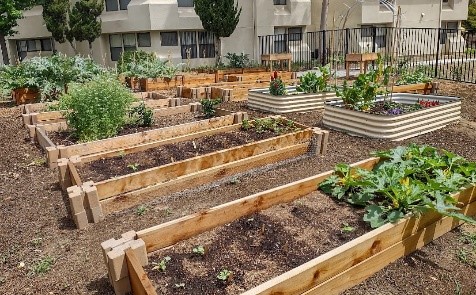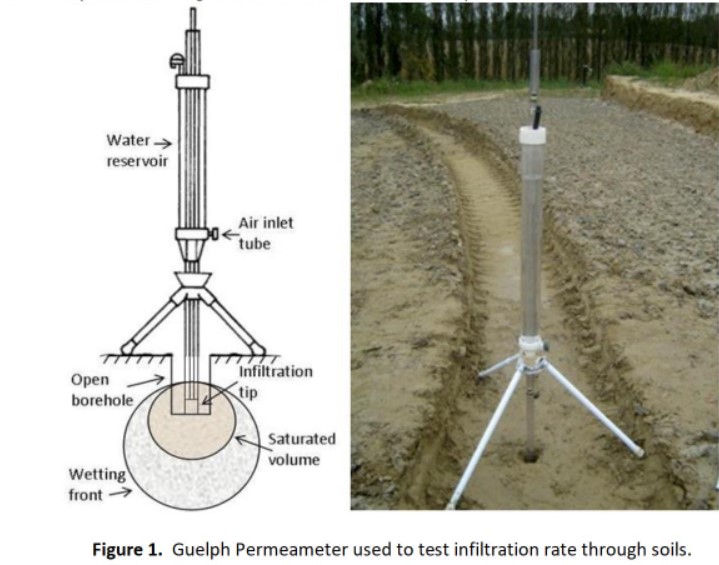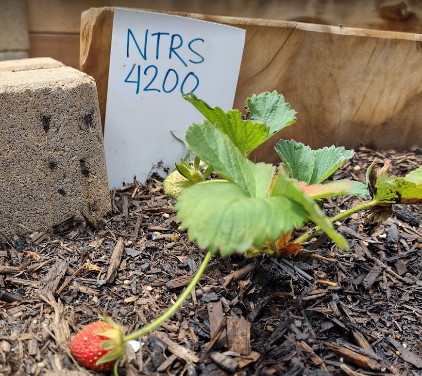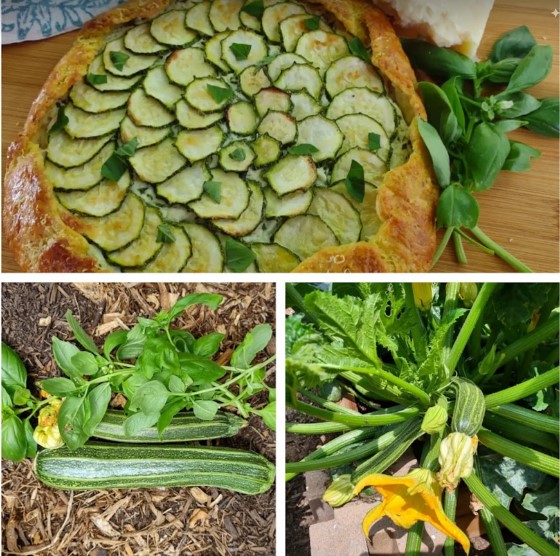The Cal State LA Urban Food Garden is a project funded by a USDA grant to create a sustainable urban food garden where students train, learn and conduct research projects in water science, plant science, social science, and nutritional science.
The strength of the garden lies in its interdisciplinary approach, which involves faculty from the history, biology, geosciences, and nutritional science departments. Through research projects and classes, students from these disciplines collaborate and learn about the importance of native and indigenous plant species, sustainable agricultural practices, the promotion of soil health, water management and retention, the science and technology behind growing food, and reducing food insecurity in under-resourced neighborhoods.
The garden is home to an array of Southern California native plants, edible and medicinal plants, fruits and vegetables, and various pollinators.
What's Happening in the Garden?
History:
A historical database of Climate Adapted Agriculture is being created to promote urban food production by uncovering the 300-year-old history of agriculture in the Los Angeles region and showing how indigenous people planted, farmed, and consumed the produce. The database centers on two primary inventories:
- A record of edible and medicinal plants that continued to thrive in the Los Angeles basin for the last 300 years
- A record of sustainable agricultural practices that have evolved in the Southern California region
Learn more about historical events
Biological Science:
A graduate student research project that is being conducted examines the benefits of growing crops in an intercropping system through facilitation by studying the microclimate conditions of three crop species grown in polycultures and monocultures and assessing their relative growth rates, productivity, and total yield.
Geosciences and Environment:
Sites selected for investigation will be tested for standard nutrients, pH, cation exchange capacity, percent base saturation, organic matter content, and soil textural analysis before site modification, revegetation, and soil amendment. Using a Guelph Permeameter, each site will also be evaluated for in situ soil infiltration capacity (Figure 1).
Selected sites for the study will include control sites where no soil amendments are added and with no revegetation, leaving soils and plants in their initial state. After sites are revegetated and amended with soil additives or new soils, studies will evaluate infiltration, water retention characteristics, and soil chemistry changes. Field and laboratory studies will be carried out to determine soil and water properties at the amended and control sites (Figure 2).
Nutritional Science:
NTRS 4200: Community Gardening and Food Sovereignty is a course that teaches responsible and sustainable horticultural practices in community landscapes and understands the role of culture and socioeconomic status in food justice. Students are given seeds to plant, are responsible for their growth and care, and lead end-of-term garden tours to showcase and share what they have grown. Recipes and dishes are created from the garden's yield to highlight the produce's importance and variety of uses.
Rustic Garden Zucchini Galette
Galettes are versatile and easy to make an impressive dish with minimal prep time. They can be made with sweet or savory ingredients and any filling. Do not fear the pastry—it comes together in minutes with a few simple ingredients and is incredibly forgiving! They are delicious, served warm or at room temperature.
Makes one 8-10" galette or two mini-galettes
Ingredients:
• 1 ½ cups all-purpose flour, chilled in the freezer for 30 minutes
• one stick cold unsalted butter, cubed
• 8 TB ice cold water
• 1/3 cup ricotta cheese
• 1/3 cup mozzarella cheese, shredded
• one large (or two small) zucchini, approx. ¼" thick (a mandolin works best)
• one egg, beaten
• Basil
• Salt
Add all-purpose flour and half a tsp of salt to a food processor bowl to make the crust. Add the butter and pulse until it resembles a coarse mixture with pea-sized pieces of butter. Transfer the mixture to a bowl, add 5 TB of ice-cold water, and mix until the dough is moist and cohesive. Suppose the dough is still dry and crumbly and does not stay together when pinched; add more water one TB at a time. Shape the dough into a disk, wrap, and refrigerate it for at least 2 hours (dough can be made up to two days in advance).
To make the filling:
- Combine the ricotta and shredded mozzarella and 1 TB of chopped basil.
- Add salt to taste.
- Set aside.
To assemble the galette: Lightly flour a countertop or parchment paper, and roll the dough into a 10-12" circle. Transfer the dough and parchment to a baking sheet.
Spread the ricotta mixture over the center of the dough, leaving a 2" strip bare along the edge. Then shingle the zucchini slices in a spiral pattern, brush with zucchini olive oil, lightly salt the top of the zucchini, and gently press the zucchini into the cheese mixture.
Bring the bare edges of the dough up and over the filling to make a 2 "border and gently press down. Chill in the freezer for 15 minutes (or refrigerator for 30 minutes). Brush the crust with an egg wash.
Bake the galette in a 400F oven for 25 minutes, shred Parmesan cheese over the zucchini, and rotate. Bake an additional 20-25 minutes or until the crust, is golden brown and the cheese is bubbling. Remove the galette from the oven and allow it to cool for 15-20. Top with basil and shredded parmesan.




